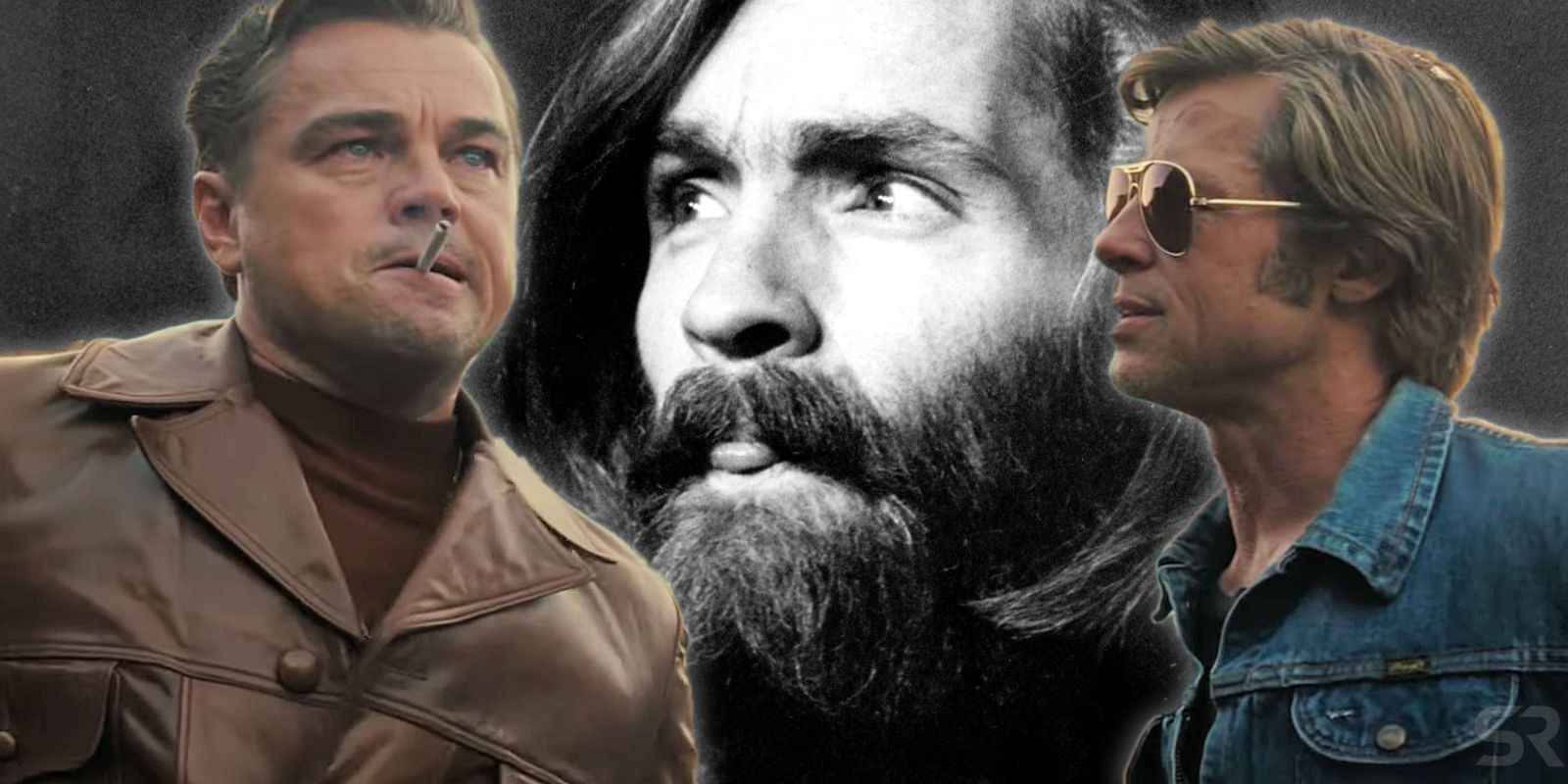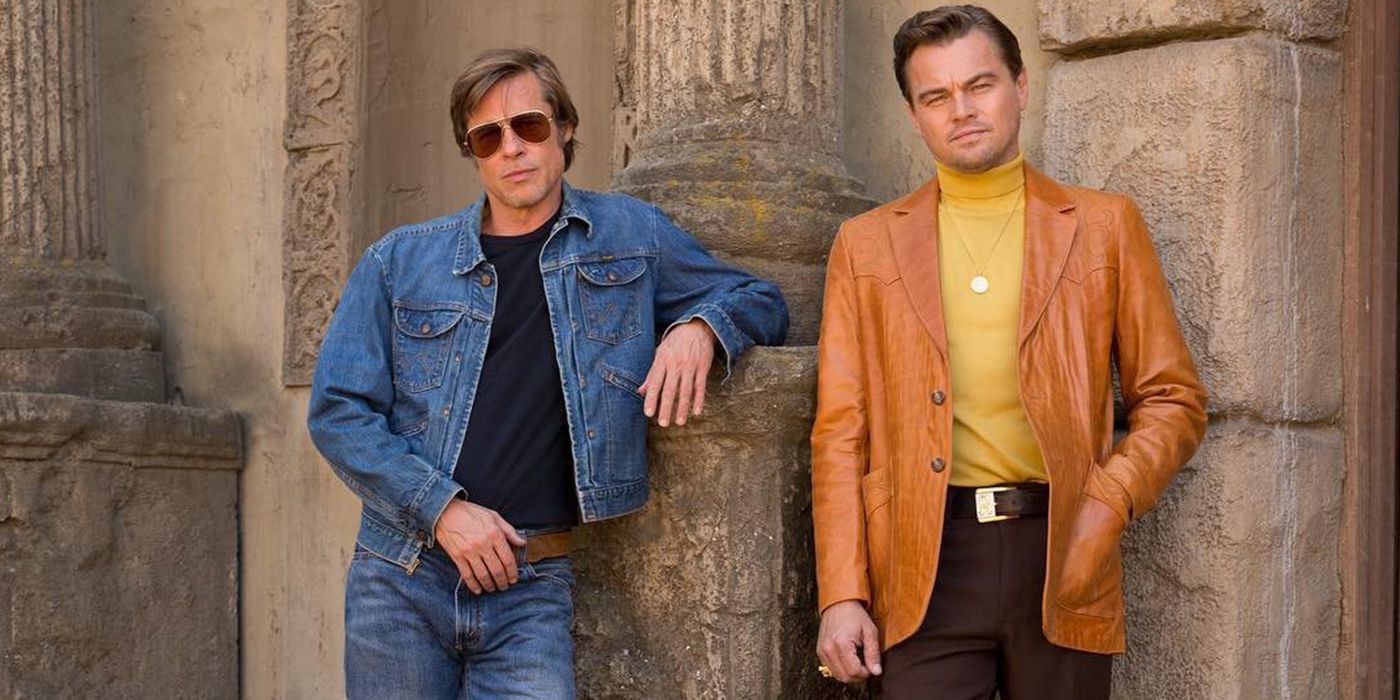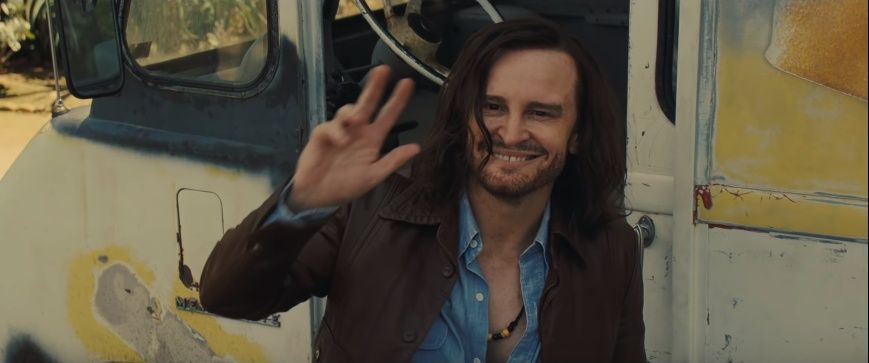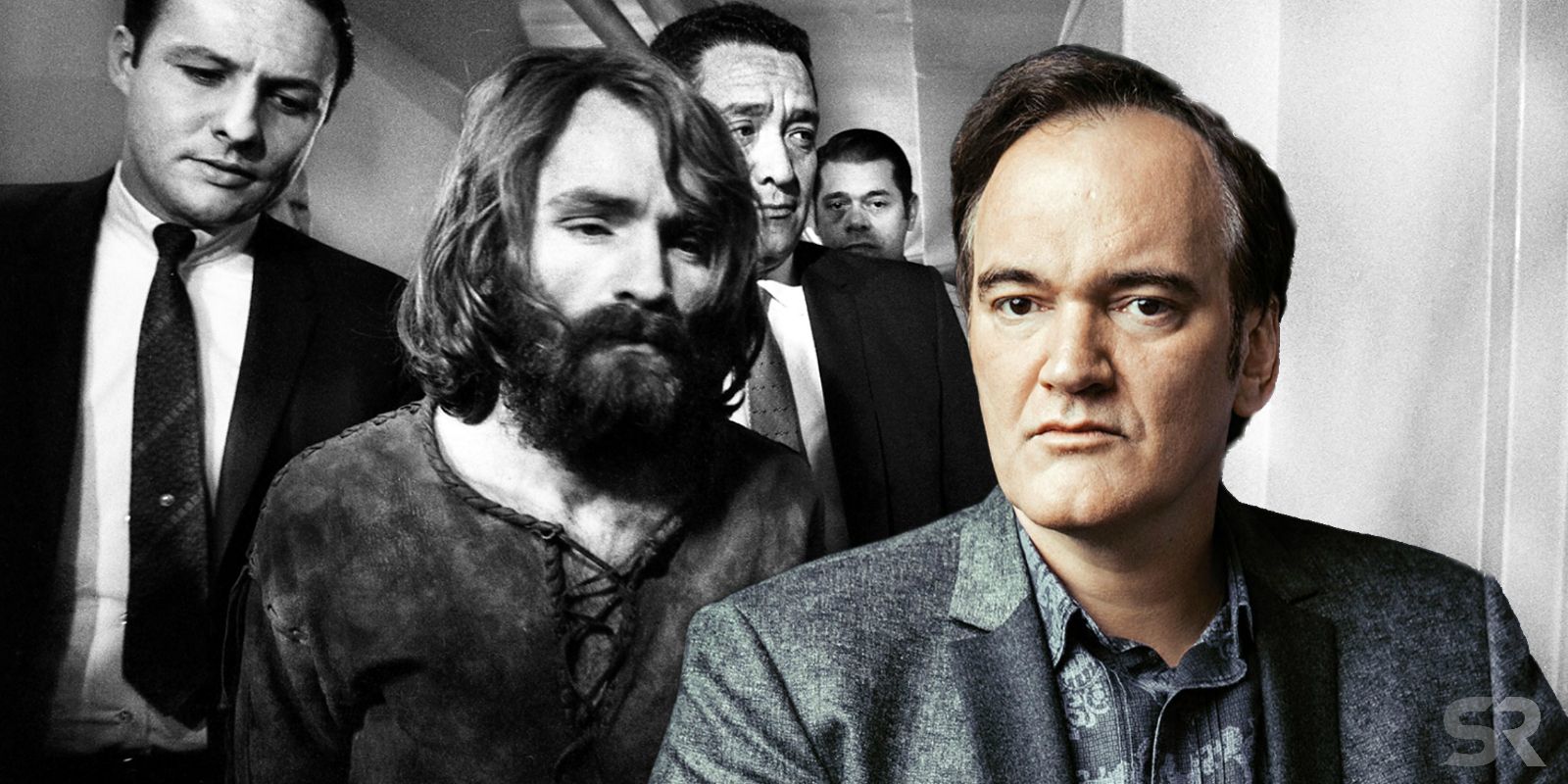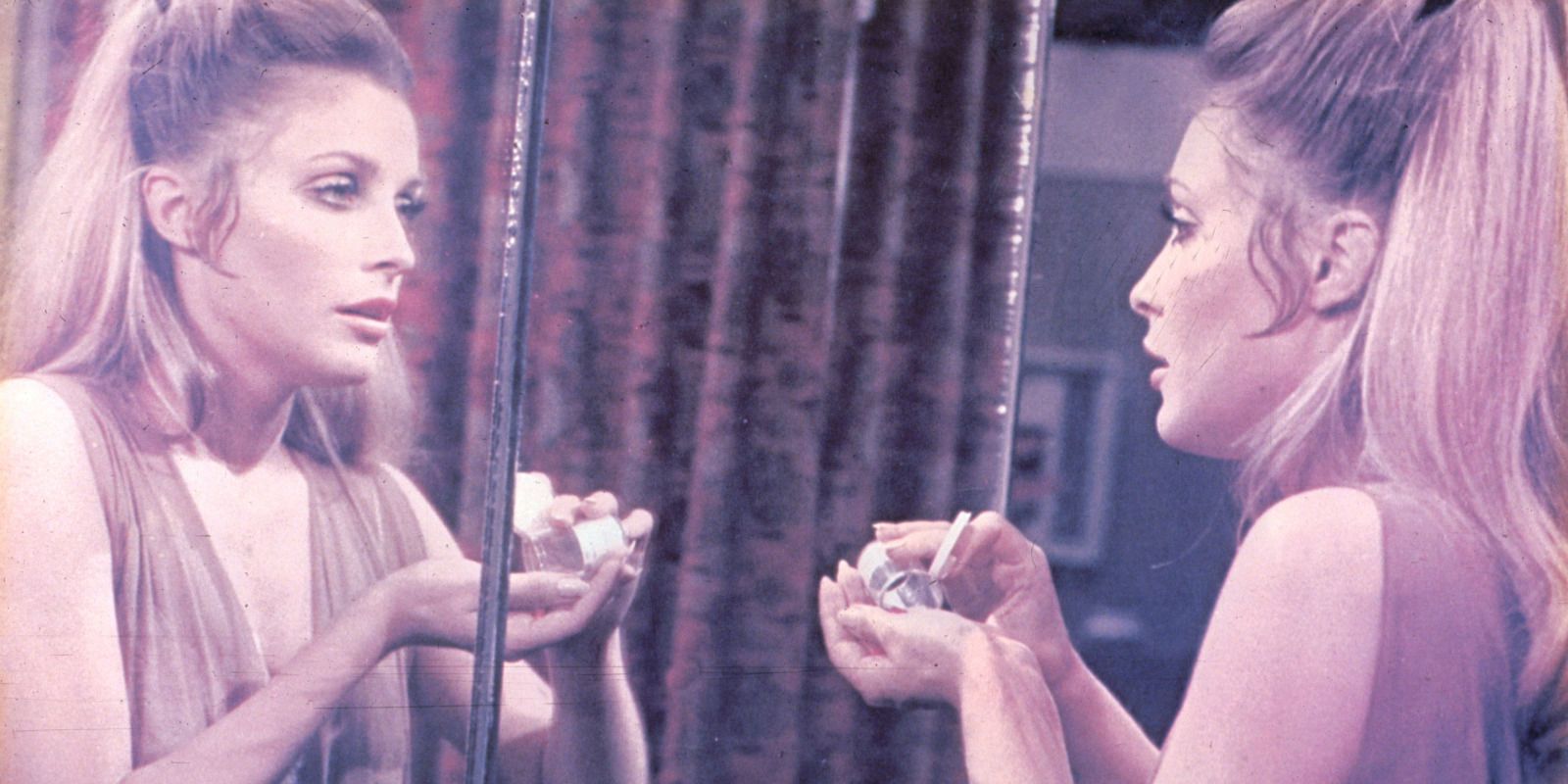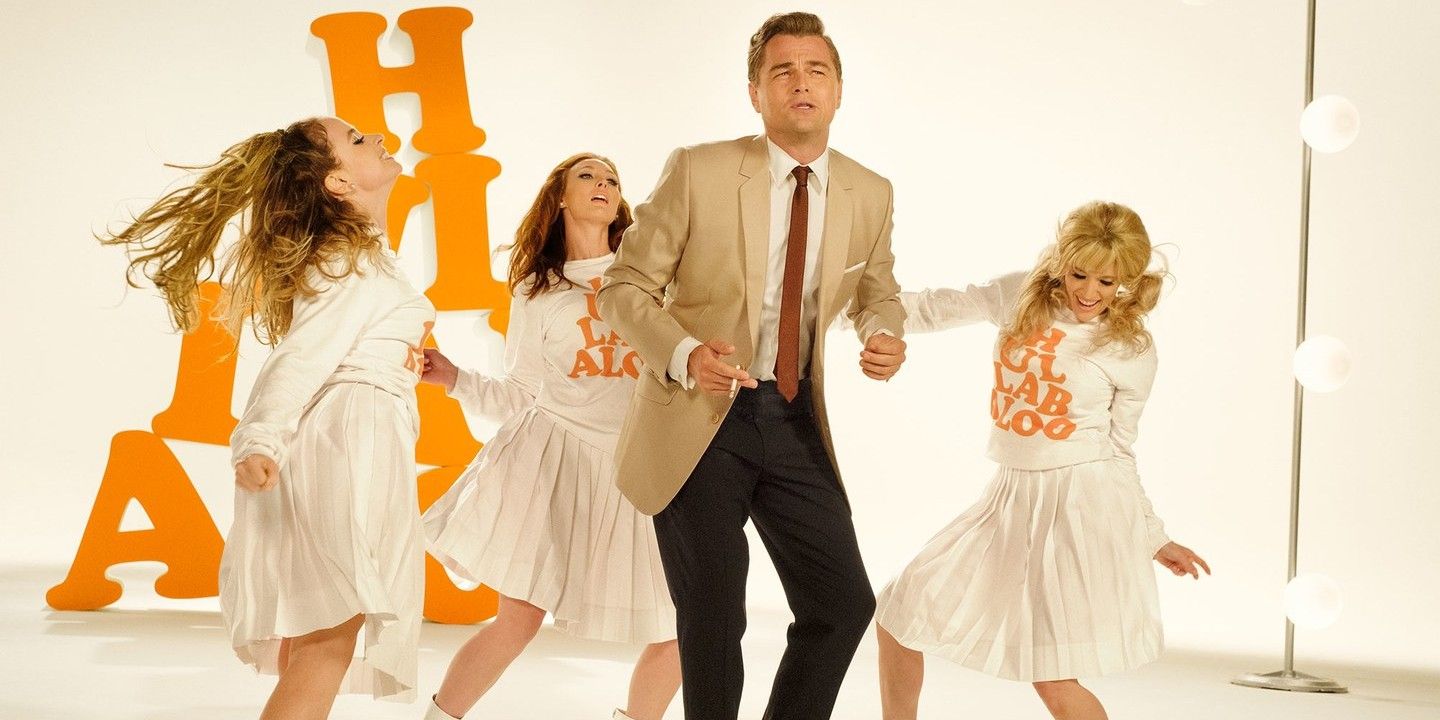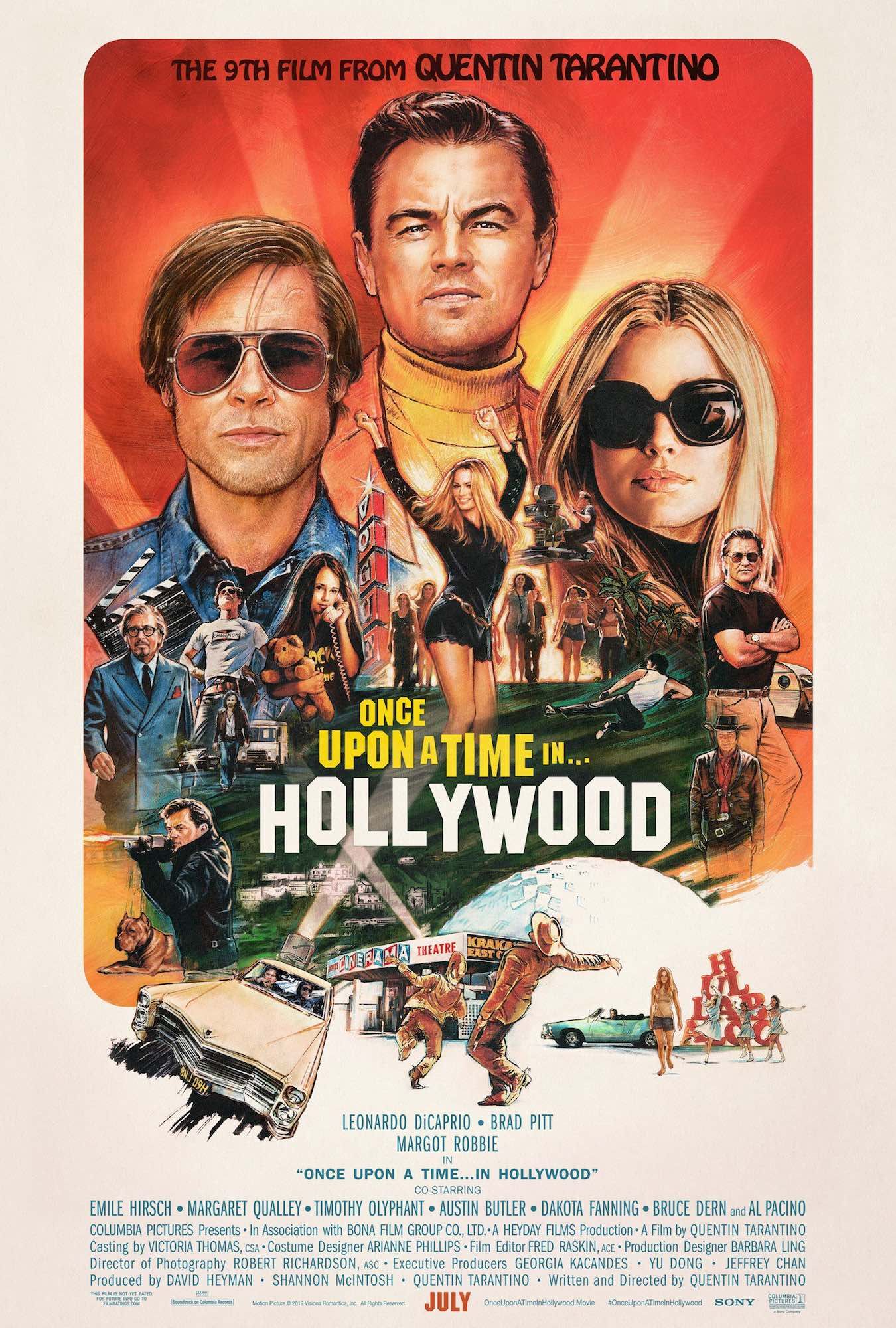Quentin Tarantino’s Once Upon a Time in Hollywood takes on the true story of late 1960s Los Angeles and the invasion of the Manson Family. The Oscar-winning director’s ninth (and possibly penultimate) film premiered at the Cannes Film Festival to strong reviews, along with a request from Tarantino himself for critics to not spoil the movie. That proved fascinating to some, given that the film is taking on one of the most recognizable and infamous events to ever occur in Hollywood history and adapting it for the big screen. With Once Upon a Time in Hollywood now in theaters, here's the grim true story that inspired it.
In August 1969, a group of hippies, led by pseudo-cult leader Charles Manson, murdered seven people, including the actress Sharon Tate, who was eight months pregnant at the time. It led to a new era of Hollywood fear that dominated the industry for decades to come. Nowadays, the Tate-LaBianca murders are the stuff of legend, in large part thanks to the sheer number of major celebrities who were associated with or connected to the case. The writer Joan Didion, whose essay collection The White Album tackled the topic and helped to define it as the benchmark of a generation, famously said that the murders signaled the true end of the 1960s and all that they represented. The story has never been adapted on this scale before, because for some in the industry, it’s just too personal a story to tell, given the popularity of Sharon Tate and the infamy of her husband, director Roman Polanski.
For his take on the tale, Tarantino has crafted a vast ensemble piece that primarily centers on two fictional characters, played by Leonardo DiCaprio and Brad Pitt. Around them unfolds the story of Tate, the Manson family, and the myriad big name celebrities moving around in that ecosystem at the time. Some of the biggest names in the business right now assume iconic portrayals, from Margot Robbie playing Sharon Tate to Damien Lewis donning the mantle of Steve McQueen. In preparation for its release, here’s the true story behind Once Upon a Time in Hollywood.
Who Were the Manson Family?
Charles Manson was a small time crook with a series of petty crimes and jail time to his name when he moved to California. He built up a following while living in San Francisco, preaching a mixture of self-help advice, hippie ideals, Scientology, racist abuse, and Beatles lyrics. He frequently claimed that he himself was Christ and/or Satan, and before long, he had dozens of eager followers ready to go to Los Angeles with him, where he hoped to break through as a musician.
While in Hollywood, Manson proved alluring to many Hollywood figures. Universal Pictures producer Gary Stromberg considered making a film about Jesus living in modern day America and thought Manson would be an interesting case study for that. For a while, the family was close to Dennis Wilson of the Beach Boys, even living in his house for a while. Manson wrote songs for the band, which they recorded but dramatically changed and didn't credit him for it, which angered Manson. Wilson even paid for Manson's studio time and introduced him to Terry Melcher, a record producer and son of Doris Day. He was responsible for producing The Byrds' first two albums, and had allegedly promised to meet with Manson to listen to some of his songs but never appeared.
After Wilson’s family evicted them from Dennis’ home, Manson and his followers established a home base on Spahn Ranch, which had previously been popular as a set for Westerns but had fallen into disrepair. Manson also set up a base of sorts in Death Valley, where he claimed the family would hide once Helter Skelter came to fruition. Having become obsessed with The White Album, the new Beatles record, Manson insisted to his followers that the songs were full of subliminal messages about an impending race war that would obliterate the country and allow Manson and his family to become the supreme rulers. It has long been debated as to whether Manson actually believed what he preached or if it was just something to keep his often highly drugged up followers placated while he hunted for his real target: a record deal.
The Manson family's murder spree technically began with the death of Gary Hinman, a music teacher who had befriended several members of the family. Manson believed Hinman to be wealthy with stocks and bonds and told his family to convince their friend to join them. When he didn't cooperate, three family members - Mary Brunner, Susan Atkins, and Bobby Beausoleil - held him hostage for two days. Beausoleil, who for a time was a friend and muse of the underground filmmaker Kenneth Anger, stabbed Hinman to death and wrote "political piggy" on the wall of Hinman's home with his blood, hoping to tie the death to the Black Panthers. Beausoleil was arrested for the murder on August 6, 1969. Two days later, Manson told his followers, "Now is the time for Helter Skelter."
The Manson Murders Explained
Between August 8 and 9, in 1969, seven murders were committed by the followers of Charles Manson that are typically grouped together as the Manson Murders. On the evening of August 8, three of Manson's most devoted followers - Tex Watson, Susan Atkins, and Patricia Krenwinkel, also accompanied by Linda Kasabian - were instructed to go to 10050 Cielo Drive in Los Angeles and "totally destroy everyone in [it], as gruesome as you can." The house was Manson's target because it used to be the home of Terry Melcher and then-girlfriend, the future Murphy Brown star Candice Bergen.
By the time he sent his followers to Cielo Drive, the home was the residence of actress Sharon Tate and her husband, Polanski. While Polanski was in London working on a film, Tate was living in the house and awaiting the birth of her son. The Manson followers entered the property, killing 18 year old student Steven Parent, who had been there to visit the property's caretaker. In the house at the time were Tate, her friend Jay Sebring, Polanski's friend Wojciech Frykowski, and Frykowski's girlfriend, Abigail Folger - the heiress to the Folger coffee brand.
All four were brutally murdered, either by being shot or stabbed. Tate pleaded with Susan Atkins to be taken back as a hostage in the hopes that they would spare the life of her unborn child. She was stabbed 16 times, either by Atkins or Watson (their testimonies changed many times over the years regarding this detail). Manson had instructed his followers to "leave a sign... something witchy" at the property, so Atkins wrote "pig" in Tate's blood on the front door of the property.
The next night, six Manson Family members - Leslie Van Houten, Steve "Clem" Grogan, and the four from the previous night's murders - were sent back out to follow more of Manson's orders. He gave Linda Kasabian directions that led them to 3301 Waverly Drive, the home of supermarket executive Leno LaBianca and his wife Rosemary. The couple were stabbed to death, and Tex Watson carved "WAR" on the Leno LaBianca's abdomen. To connect the crime to the previous evening's murders, Krenwinkel wrote "Rise" and "Death to pigs" on the walls, and "Healter Skelter" on the refrigerator door, a reference to Manson’s conspiracy.
It took a while for the police to put together that the Tate and LaBianca murders were by the same people, with the original theory being that Tate and company were murdered as part of a drug deal gone wrong. A major breakthrough in the case came when Susan Atkins, who was in jail for another crime (for Gary Hinman's death), told her cellmates that she was responsible for killing Sharon Tate. Soon thereafter, Manson and several members of his family were arrested. The trial lasted for over seven months and was hotly covered by the press, in large part because Manson and his followers caused drama every day on the stand, including infamously carving Xs onto their foreheads. Linda Kasabian was one of the major witnesses for the prosecution, having agreed to speak out against her former friends in exchange for immunity.
The main players in the case - Manson, Atkins, Krenwinkel, Van Houten, and Watson - were sentenced to death, which was reduced to life imprisonment after California abolished the death penalty. Manson died in prison in 2017 at the age of 83. Atkins died in 2009, in prison, from brain cancer. She, like Van Houten and Krenwinkel, spoke out frequently over the decades regarding their guilt for their crimes. Patricia Krenwinkel, Leslie Van Houten, and Tex Watson are still in prison, having been denied parole dozens of times between them.
Who Was Sharon Tate?
At the time of her death, Sharon Tate only had six movie credits and a handful of television episodes to her name, but even with that scant filmography, in 1969, she was a major star. She was celebrated as one of Hollywood's most promising newcomers, one of the era's great beauties, and one-half of a major power couple thanks to her marriage to Polanski. Her movie debut as a star came with the 1966 horror film Eye of the Devil, but her most famous movie was the much-hyped adaptation of Valley of the Dolls. Jacqueline Susann’s book was a bestselling phenomenon and Tate thought that the project would legitimize her as a serious actress rather than a mere sex symbol. While the film was a massive commercial success, it was critically lambasted at the time, although it has since been reappraised as a camp cult classic.
In 1968, she married Polanski, the same year he would become a critical darling with the release of Rosemary’s Baby. Tate was keen to settle down into traditional married life, but Polanski remained notoriously promiscuous and cheated on her constantly. Despite that, they remained a popular couple in Hollywood and partied with some of the biggest names in the industry. That same year, Tate would begin work on The Wrecking Crew, a spy parody starring Dean Martin, wherein she performed all her own stunts and was taught martial arts by Bruce Lee. She filmed her final movie, The Twelve Chairs, in Italy while she was pregnant. When Tate was murdered at the age of 26, much of the press attention focused on her beauty but many conspiracies swirled around that she and her friends were involved in Satanic rituals. Today, her legacy lives on through her films and re-evaluations of her legacy, as well as the work continued by her family to fight for victims' rights in the legal system. Her husband, Polanski, still works and now lives in Paris with his family, having fled America to avoid being charged with drugging and raping a minor.
What Once Upon a Time in Hollywood Adds (& Changes)
By and large, Once Upon a Time in Hollywood is less about the Manson family and their crimes and more focused on that heady period in Hollywood history when the old studio system died off in favor of hot young auteurs and their radical politics. Tate, Polanski, the Manson family, and various other celebrities are featured in the vast ensemble, but the story’s main players are fictional: the TV actor Rick Dalton (played by Leonardo DiCaprio) and his stunt double Cliff Booth (played by Brad Pitt).
Dalton is a TV star on a once popular Western series called Bounty Law, but his attempt to transition to film has not gone well after the genre's popularity has begun to wane with the end of the decade. While this character is fictional, he is heavily inspired by Burt Reynolds, who was originally cast in Once Upon a Time in Hollywood as George Spahn before his death (the role was taken over by Bruce Dern). Reynolds' long-time collaborator and stuntman Hal Needham, who worked with him on Smokey and the Bandit, is a major influence for the character of Cliff Booth. Tarantino was such a fan of Needham's work that, when he was given a Governors Award by The Academy, Tarantino provided the introduction.
In the film, Dalton gets hired for a Western TV series called Lancer, which was a real show that ran from 1968 to 1970. Actor-director Sam Wanamaker was attached to the show. He is perhaps best known as one of the leading figures behind the restoration of the Globe Theatre in London. In Once Upon a Time in Hollywood, he is played by Nicholas Hammond, the original Peter Parker from The Amazing Spider-Man and one of the Von Trapp children from The Sound of Music. Other Lancer stars featured in Once Upon a Time in Hollywood include James Stacy (played by Timothy Olyphant) and Wayne Maunder (played by the late Luke Perry).
The Tate-LaBianca murders irrevocably defined that era of Hollywood in a way that its movies and celebrities couldn’t manage, so telling a story of that period in Los Angeles history was always going to be a tricky task, regardless of the filmmaker at the helm. Tarantino has chosen to use the setting and its most infamous event as a backdrop to create what critics are calling an ode to the 1960s. So far, Once Upon a Time in Hollywood is garnering excellent reviews, but even its most ardent fans note the controversial nature of a director as bombastic as Tarantino taking a subject that is still painful for the many people who were associated with it. Regardless, the story of Sharon Tate, the Manson family, and the day the 1960s ended is one that will endure, for better or worse, as the ultimate Hollywood story.

